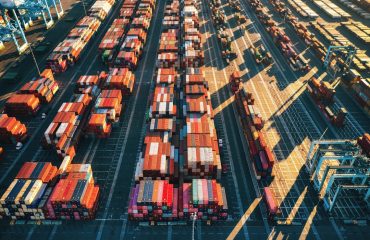The oil and gas industry relies heavily on robust and reliable pipelines to transport crucial resources. At the heart of this infrastructure lies the API 5L standard, a globally recognized specification for line pipes. This comprehensive guide will delve into the intricacies of API 5L, explaining its significance, specifications, and applications.
Understanding API 5L: What Does it Cover?
API 5L, officially titled “Specification for Line Pipe,” is a standard published by the American Petroleum Institute (API). It outlines the requirements for seamless and welded steel line pipe intended for use in the transportation of oil and gas. This standard covers a wide range of aspects, from the chemical composition and mechanical properties of the steel to the manufacturing processes and testing procedures. It ensures that the pipes meet stringent quality and safety standards, crucial for preventing leaks, ruptures, and environmental damage. The standard is regularly updated to reflect advancements in materials science and manufacturing techniques, ensuring continuous improvement in pipeline safety and reliability.
API 5L Pipe Grades: A Deep Dive into Material Specifications
API 5L specifies various grades of steel pipe, each designed for specific applications and operating conditions. These grades are denoted by a letter and a number (e.g., L45, X42, X65, X70, X80, etc.). The letter indicates the manufacturing process (L for seamless, X for welded), while the number represents the minimum specified yield strength in thousands of pounds per square inch (ksi). Higher numbers indicate stronger and more durable pipes, suitable for higher-pressure applications. The choice of grade depends on factors such as the pipeline’s diameter, operating pressure, and the environment it will be subjected to. For instance, X80 and higher grades are commonly used in high-pressure, long-distance pipelines, while lower grades might be suitable for lower-pressure gathering lines. Each grade also has specific requirements for chemical composition, tensile strength, and other mechanical properties, all meticulously detailed within the API 5L standard.
Manufacturing Processes: Seamless vs. Welded API 5L Pipes
API 5L pipes are manufactured using two primary processes: seamless and welded. Seamless pipes are produced by piercing and rolling a solid steel billet, resulting in a single, continuous piece without welds. This process generally produces higher-strength pipes with superior resistance to corrosion and cracking. Welded pipes, on the other hand, are created by joining two or more steel plates or strips using various welding techniques, such as submerged arc welding (SAW) or electric resistance welding (ERW). Welded pipes are often more cost-effective for larger diameters, but they require careful welding and inspection to ensure the integrity of the weld joint. The API 5L standard meticulously outlines the requirements for both manufacturing processes, ensuring that regardless of the method used, the resulting pipe meets the specified quality standards.
Testing and Quality Control: Ensuring API 5L Compliance
The API 5L standard mandates rigorous testing and quality control procedures to ensure that the manufactured pipes meet the specified requirements. These tests include chemical analysis to verify the steel composition, tensile testing to determine the strength and ductility, and various non-destructive testing (NDT) methods such as ultrasonic testing (UT), radiographic testing (RT), and magnetic particle testing (MT) to detect flaws and imperfections. Hydrostatic testing is also commonly performed to assess the pipe’s ability to withstand internal pressure. The frequency and type of testing depend on the pipe grade and diameter. The results of these tests are meticulously documented and verified to ensure that only compliant pipes are used in pipeline construction. This rigorous testing and quality control process is essential for ensuring the safety and reliability of the pipeline system.
Applications of API 5L Pipes: A Wide Range of Uses
API 5L pipes find widespread application in the oil and gas industry, forming the backbone of onshore and offshore pipeline networks. They are used in various stages of oil and gas production, transportation, and processing, including: gathering lines that collect oil and gas from wellheads, trunk lines that transport large volumes of hydrocarbons over long distances, and distribution lines that deliver the resources to refineries and processing facilities. Beyond the oil and gas industry, API 5L pipes are also used in other applications requiring high-strength, durable steel pipes, such as water transmission lines and other industrial processes. The versatility and robust nature of API 5L pipes make them a crucial component in various infrastructure projects worldwide.
In conclusion, the API 5L standard plays a vital role in ensuring the safety and reliability of pipeline systems globally. Understanding its intricacies, from material specifications to manufacturing processes and testing procedures, is crucial for anyone involved in the oil and gas industry or related infrastructure projects.
SEO-Friendly Tags:
- API 5L Pipe
- Line Pipe Standards
- Oil and Gas Pipeline
- API 5L Grades
- Steel Pipe Specification




